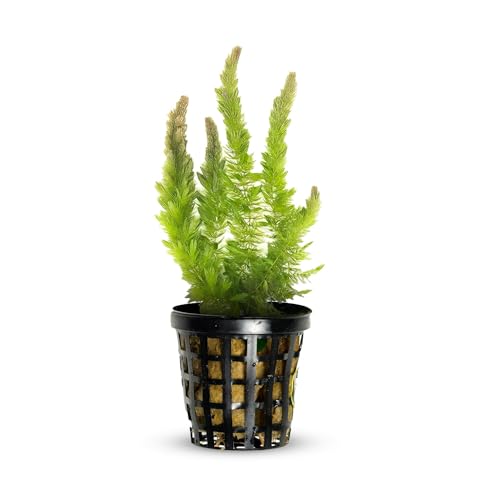Water your String of Turtles plant every 1-2 weeks, allowing the soil to dry out between waterings. Overwatering can lead to root rot, so it’s important to let the soil dry slightly before watering again.
String of Turtles, scientifically known as Peperomia prostrata, is a unique and attractive trailing plant that is popular among houseplant enthusiasts. Its small, turtle-shaped leaves and easy-care nature make it a favorite for both beginners and experienced plant owners. Proper watering is crucial for the health of your String of Turtles, as it is susceptible to root rot if overwatered.
In this blog, we will explore the best practices for watering your String of Turtles plant, including how often to water, signs of underwatering and overwatering, and tips for maintaining the ideal moisture level for this charming houseplant.
String Of Turtles
The String of Turtles is a charming and popular plant known for its unique foliage, resembling tiny turtle shells. Its appeal lies in its attractive trailing vines and beautiful patterned leaves, making it a favorite among plant enthusiasts.
Recognizing when your Peperomia Prostrata needs water is crucial for its well-being. The plant will show signs of thirst through drooping or wilting leaves, indicating that it requires hydration. However, it’s important to strike a balance, as overwatering can be detrimental to its health.
Watering Fundamentals
When it comes to watering your String of Turtles plant, soil composition and drainage are key factors to consider. The soil should be well-draining, preferably a mix of potting soil, perlite, and sand to prevent waterlogging.
The pot size and material also play a crucial role in determining the watering frequency. A small pot will dry out faster, requiring more frequent watering, while a larger pot retains moisture for longer. Additionally, terracotta pots allow for better air circulation, aiding in the prevention of overwatering. Monitoring the moisture level of the soil is essential to avoid root rot and maintain the health of your String of Turtles plant.
Determining Watering Frequency
When it comes to watering your String of Turtles plant, it’s important to find the right balance. Overwatering can lead to root rot and other issues, so it’s essential to look out for signs of overwatering.
These signs may include yellowing or wilting leaves, a foul odor coming from the soil, or the presence of fungus or mold. On the other hand, underwatering can cause the leaves to become wrinkled, dry, or crispy.
To determine the appropriate watering frequency for your String of Turtles, you should consider factors such as the plant’s environment, pot size, and drainage. It’s generally recommended to wait until the top inch of soil feels dry before watering again. Remember, each plant is unique, so it’s essential to observe and adjust your watering routine accordingly.
Seasonal Adjustments
String of Turtles plants require different watering schedules depending on the season. In the summer, it’s important to provide adequate water to keep the soil moist. Water the plant thoroughly, allowing excess water to drain out of the bottom of the pot. Be cautious not to overwater, as this can lead to root rot.
During the winter, it’s crucial to reduce watering frequency. The plant goes into a dormant state, and too much water can cause the roots to rot. Allow the soil to dry out between waterings.
Remember to adjust your watering schedule according to the specific needs of your String of Turtles plant, considering factors such as humidity levels and the type of potting mix used.
Environmental Factors Influencing Water Needs
Environmental factors play a crucial role in determining the watering needs of a String of Turtles plant. One such factor is humidity levels. These plants thrive in environments with moderate to high humidity. It is important to keep the humidity around the plant at optimal levels to prevent the leaves from drying out.
Another factor to consider is light exposure and temperature. String of Turtles plants prefer bright, indirect light but can also tolerate partial shade. It is important to place them in a location where they receive adequate light without being exposed to direct sunlight for extended periods, as this can lead to leaf burn.
When it comes to temperature, these plants prefer warm conditions ranging between 65-80°F (18-27°C). They can tolerate slightly cooler temperatures but should be protected from cold drafts or extreme temperature fluctuations.
Watering Techniques
When it comes to watering your String of Turtles, it’s important to find a balance between keeping the soil moist and avoiding overwatering.
Top watering is the most common method, where water is poured directly onto the soil. However, bottom watering can also be effective for String of Turtles. Simply place the pot in a dish of water and let the soil soak up the water from the bottom.
Misting isn’t necessary for String of Turtles, as they prefer slightly dry conditions. However, if the air in your home is particularly dry, misting once a week can help to increase humidity.
Common Mistakes To Avoid
Avoid Common Mistakes:
Neglecting the pot’s drainage can lead to root rot. Using non-porous containers may cause waterlogging.
Ensure proper drainage holes in the pot. Choose porous containers for healthy plant growth.
Monitoring Plant Health
For String of Turtles plants, monitor soil moisture regularly. Check leaves for wilt or yellowing signs. Adjust watering based on plant needs. Repot if roots outgrow container.
Advanced Care Tips
For optimal care of String of Turtles plants, water them thoroughly when the top inch of soil is dry. This usually translates to watering every 1-2 weeks, but adjust based on humidity levels and season. Overwatering can lead to root rot, so ensure proper drainage.
| Watering Frequency | String of Turtles requires watering every 2-3 weeks. |
| Soil Moisture | Keep soil moist but not waterlogged to prevent root rot. |
| Sunlight Exposure | Place in bright indirect light to thrive and grow well. |
Conclusion
After reading this article, you should now have a better understanding of how often to water your String of Turtles. Remember that these plants prefer to dry out between waterings, so it’s important not to overwater them. Pay attention to the soil moisture and adjust your watering schedule accordingly.
With proper care, your String of Turtles will thrive and bring joy to your space for years to come. Happy gardening!




Leave a Reply